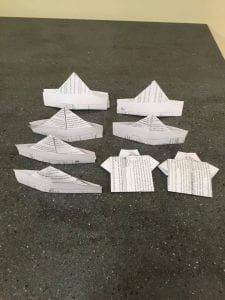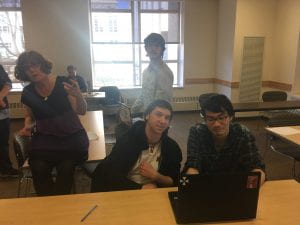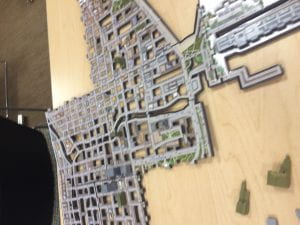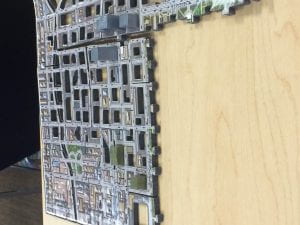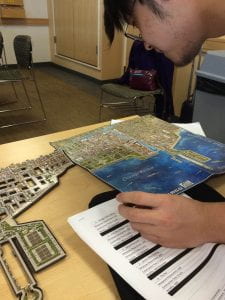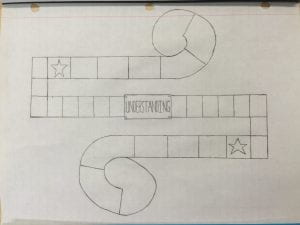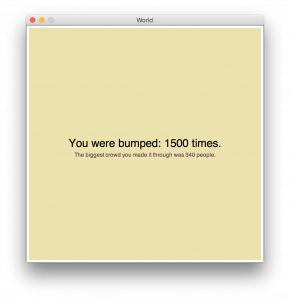Sensation Deprivation
Overview:
This game is meant for all players to sense the feeling of being blindfolded and having to focus on a visual task. While blindfolded, players must draw a visual representation of the song that they are listening to. Ultimately, the players must guess which song corresponds to each drawing in the end, but the main focus of this game is to experience sensation deprivation.
Materials Needed:
- Some tunes
- 10 Earphones/headphones
- 10 blindfolds
- 10 pieces of paper cut out
- 10 pencils
- 10 human beings
- Tape
- White/Blank Wall
How to Play:
Please take a look at the powerpoint attached (with documentation at bottom)
Statement:
This game is a combination of several influences from those who we learned from through this semester. I would say that the element of audience participation is from Yoko Ono. From her white chess to her cut-piece, much of her art/game heavily relies on the audience’s actions. I took some ideas from what we learned from the score assignment to use. Very much like a score, this game is simply just following a set of instructions, and the outcome is something that is not predictable. Additionally, with the way that all of the audience’s artwork is presented in the end is sort of like Sophie Taeuber’s pieces where it is tiled on a canvas and it almost looks like a puzzle that was put together.
In terms of the matrix, I would place it near the radical formal corner because of the low skills that are required for this game and also how it does not have much association with politics or that sort of agenda. This game focuses more on the playing of the game and not so much the message that is left for the audience in the end
Playtest Discoveries
During some of the playtests that I had, some people told me that the other platform that I was using before (before google drive) was not working on their devices and I realized that it’d be a big problem for the soundtrack to not be working for them. I then changed the platform of my song to be on google drive since it is more universal and all my problems were gone. Another thing that people told me during the process of developing the soundtrack was that the song transitions were not that clear so I fixed it through a few edits. I also made the canvas for each player more simplified so that they would not have to think about a hundred things while blindfolded and drawing.
Documentation:

